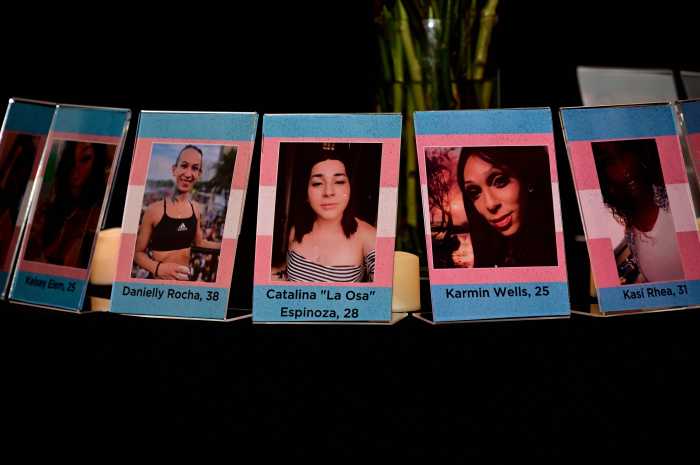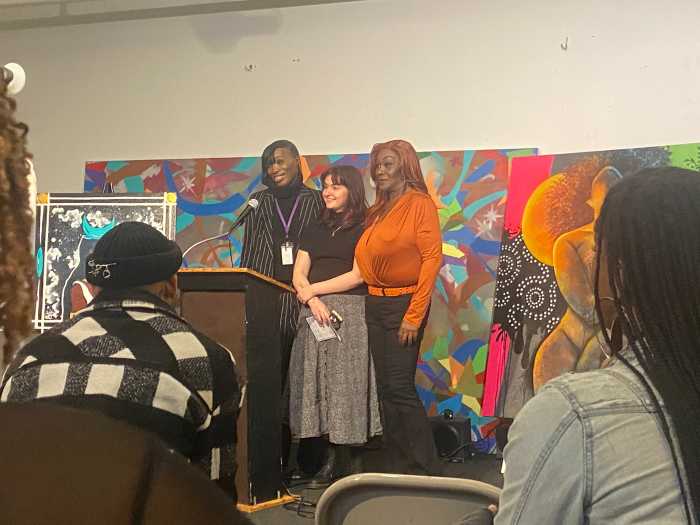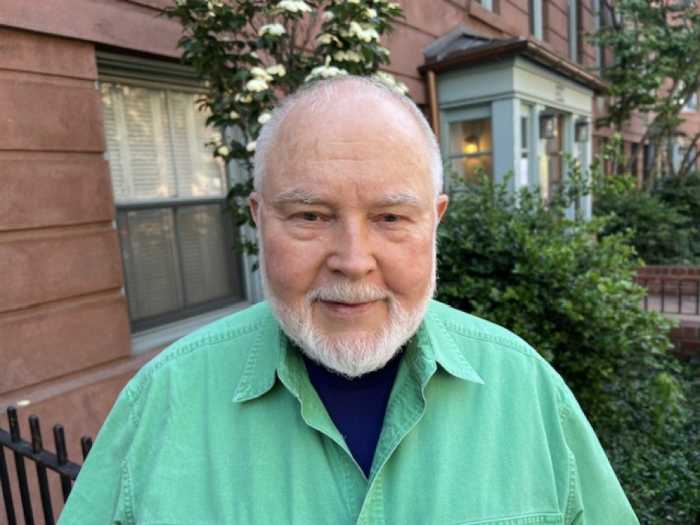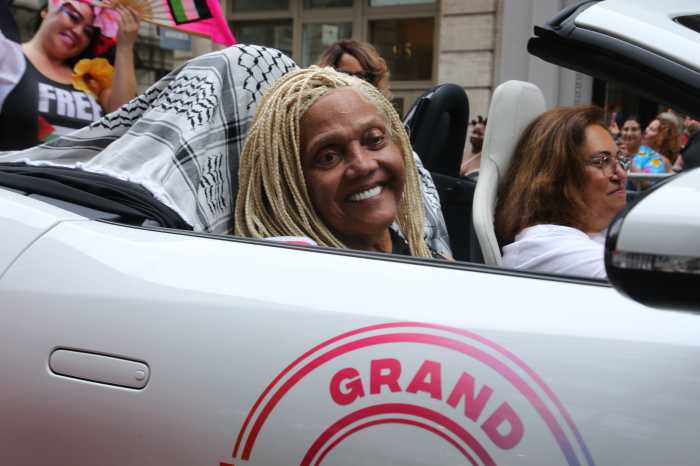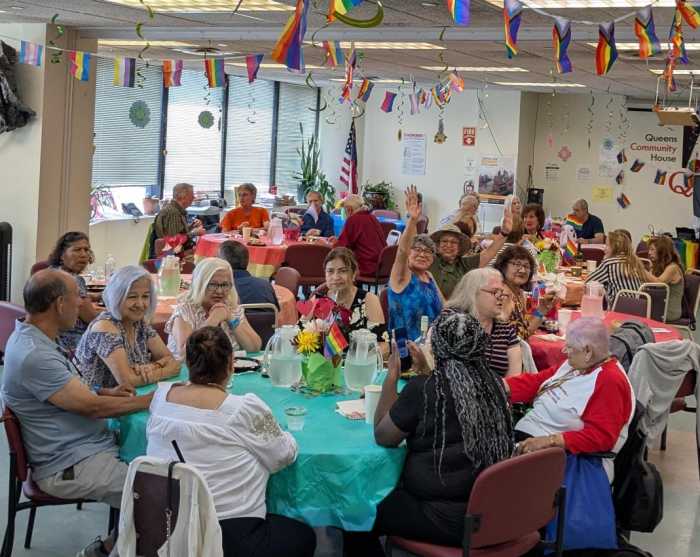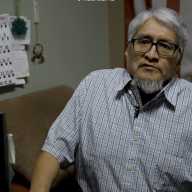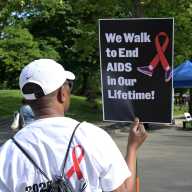Nanette Kazaoka, a well-known figure in the fight for HIV/AIDS awareness and the rights of marginalized communities, passed away on Oct. 2 at her home on the Upper West Side. She was 83. Her daughter, Kelly Kochendorfer, confirmed that the cause of death was complications from vascular dementia and Alzheimer’s disease.
Kazaoka was a fearless advocate for justice, particularly in the early days of the AIDS crisis, when she became a member of the AIDS Coalition to Unleash Power, or ACT UP. She is perhaps best remembered for her participation in a 2004 protest in front of Madison Square Garden during the Republican National Convention, when she and 11 fellow activists staged a dramatic naked demonstration demanding debt cancellation for impoverished countries. “Bush, Stop AIDS. Drop the Debt Now!” they chanted, with slogans stenciled in black paint on their bodies. The bold protest drew national attention and underscored the urgency of global debt relief as a key element in the fight against AIDS.
Kazaoka’s role in that event, as well as numerous other acts of civil disobedience, cemented her status as a fierce and unapologetic activist.
Born Nanette Natalina Bottinelli on June 12, 1941, in New York City, she grew up in a colorful household. Her father, Angelo, worked as a waiter at the St. Regis Hotel, while her mother, Betty McComb, was a part-time burlesque dancer.
She married her first husband, Fred Kochendorfer, in 1963, and they had two children together, Kim Skrobe and Kelly, both of whom survive her.
Kazaoka’s journey to Fire Island marked a transformative period in her life. Mr. Kochendorfer wanted to live there, and so they began renting in 1967. Kazaoka then made a bold decision that would shape her future: She left her husband for another man and began living on Fire Island in 1968-1969, with the children attending school in Ocean Beach.
This period coincided with the early days of the gay rights movement, as Fire Island, particularly the Pines, was emerging as a hub for LGBTQ+ culture. Kazaoka’s time there exposed her to a vibrant, transformative community at the forefront of social change. Her experiences during these years contributed to the strong sense of activism and solidarity that would later define her role in ACT UP and the broader fight for LGBTQ+ rights.

Kazaoka’s second husband, Katsushiga “Kats” Kazaoka, a Japanese-American psychologist who had been interned during World War II, died of cancer in 1984. His death had a profound impact on her, pushing her to enter the workforce as a receptionist while studying occupational therapy at Downstate Medical Center. By 1990, she had earned her degree and sought work with AIDS patients.
In 1988, a close friend introduced her to ACT UP, sparking the start of her full-time dedication to AIDS activism. Kazaoka became known for her passionate, unrelenting activism, whether protesting at City Hall or challenging anti-LGBTQ policies at St. Luke’s Hospital. She was known for speaking her mind, such as when she objected to the military recruiting at her workplace because of its policies against gay service members.
Her activism was not without its risks — Kazaoka was arrested, but she always approached the consequences with humor and resolve. She participated in landmark protests, including “Stop the Church,” a controversial demonstration at St. Patrick’s Cathedral, and the 1994 protests against homophobia in the military during the Iraq War.
Kazaoka’s activism spanned 35 years, making her a beloved and respected figure within ACT UP and beyond. Her indomitable spirit left a lasting impact on the HIV/AIDS movement. She was featured in Sarah Schulman’s “Let the Record Show: A Political History of ACT UP New York, 1987-1993” as well “Act-Up Oral History, No. 162” digital history. She was the cover photo of “Fag Hags, Divas and Moms: The Legacy of Straight Women in the AIDS Community,” and was included in The New York Times T Living Magazine story, “LEGENDS PIONEERS AND SURVIVORS.”
Kazaoka’s passion for dance began while studying dance therapy, where she met Katsushiga Kazaoka. This sparked a lifelong love for movement, and she explored various styles such as flamenco, Hindu, jazz, modern, and tap. Her dedication to dance was unwavering, and she remained a student of ballet and Japanese dance until her late 70s.
Her dedication to science continued even after her passing: She donated her brain to the Mount Sinai NIH Brain and Tissue Repository for research to advance the understanding of the human brain health and disease to help end dementia.
Along with her daughters, Kazaoka is survived by her son-in-law John Skrobe, granddaughter Stella Skrobe, and daughter-in-law Christine Arax, all of New York. She and her third husband, Paul Haskell, divorced in 2000.


